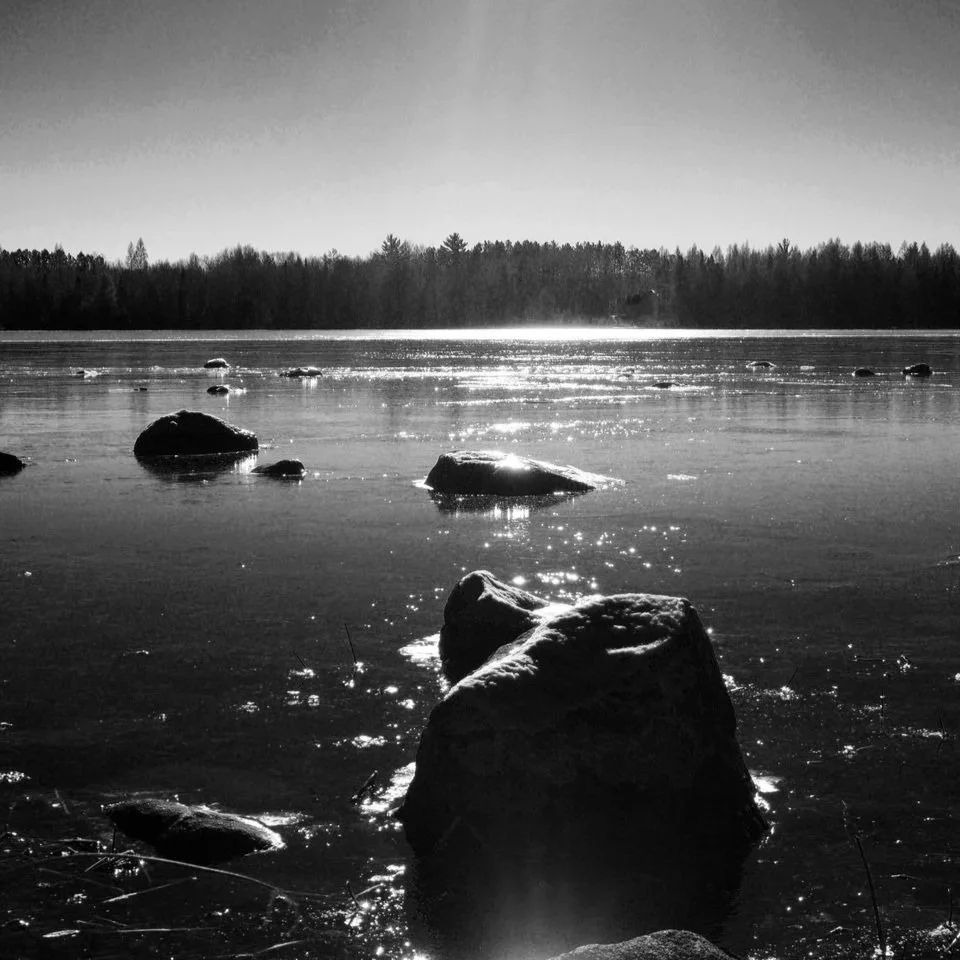The last week of February was heavy with thaw. The sun rose higher in clear skies and brought warmth that was not there 30 days prior. In the house Fenway, the Boston terrier, and Lady, the cat, found the places where the sun shone through south-facing windows.
Slept, the two of them, in the amber of late winter sun, taking in the sun and the heat as if sustenance that would bring renewal as it will with the earth that wakes with the warming that spreads as a benevolent bloom until spring is here.
I drove to the woodlot in the late morning on roads wet with snowmelt. The snow still lay deep and pure along the road.
I parked the truck on the edge of the blacktop, walked to the back, pulled out a pair of snowshoes, tightened the bindings. Then I put the blacktop to my back and walked into the familiar landscape.
Hillside rose ahead of me. I thought: Last time I walked this was deer season. Not much snow then.
I walked slowly. One does not skim the surface of snow on snowshoes, not like the water spiders in summer. Snowshoes sink some; effort moves them forward. I walked patiently, looking at the land, scouting.
There was some deer sign, not much but some. I noted it. Deer, come winter, do not much use this land; not enough food and a bad acorn crop last year didn’t help. Turkey tracks, some deer track, not much else.
The snow was deep and it was an effort to walk. Still, it was a good day to be outside. Though one has to think most days are good days to be outside.
The deer stood out; blocky brown shape against white snow. It was bedded in the sun. Head up, ears cocked, eyes meeting mine. I stopped, stood still.
The deer was nervous. It stood, turned, and moved away. Buck or doe, I couldn’t tell. Most bucks have dropped antlers by now. The deer bounded then slowed and walked, looking back, snow midway to its belly.
I watched it and thought: Do I come back tomorrow and kill it?
Do I come back the next day, March 1, with a legal tag in my pocket and my deer rifle in my hand and kill that deer, or, for that matter, any other? Do I come back to kill a late-winter deer so the deer can be tested for Chronic Wasting Disease?
A wild deer tested positive for Chronic Wasting Disease (CWD) this past rifle season on the north edge of Lincoln County and ever since then I’ve felt a cloud of low hanging dread over my days. Chronic Wasting Disease. It kills every deer that contracts the disease. Every single one. It is indiscriminate; it kills bucks and does, yearlings and adults, kills every blessed one that comes down with it.
A few years ago, in Washburn County, northwest of here, a deer returned a positive result. Since then over 2,000 deer in that area have been tested. None had the disease.
The buck that tested positive in Lincoln County was near the Camp 10 ski area. It was the first wild deer in this area that came up positive. But testing is voluntary and last year in Lincoln County only 37 deer were tested. In Oneida County, 179.
To get an accurate idea of the percentage of deer that are positive for CWD in this area far more tests are needed. To get a sample to start off the DNR offered kill tags to landowners near where the positive deer was killed. They want to kill perhaps 50, maybe 75 to get a baseline. My land is in that zone.
On that sunny day in late February with the promise of winter’s end in the air I looked at that deer with new eyes. I had the next day off. Should I come back, rifle in hand?
I knew I should, knew I should take a deer for testing, knew above all else that we need to know if the disease is established or not, knew that the only way to do that is to take deer, sooner rather than later. Take them and test them and hope for the best. I knew that. I knew I should shoot a deer and take it in for testing.
And knew with equal certainty that in my gut I did not want to do it. Knew I found it distasteful. Knew, as I wrote to a friend, that I’d feel more a hit man than a hunter. Knew that a late winter deer is a survivor and deserves to see springtime.
Knew that at my age I do not care if I shoot another deer; I’ve taken as many as I need. But knew also that the future of the deer herd and the deer hunt for the next generation needs to be secured. CWD would be a blight across the land. I knew we needed facts. And facts come from testing deer.
I thought this out as I snowshoed back to the truck. I thought of it that evening as sun went down. My rifle stood in the corner, ready; my deer hunt gear close by; cartridges gleamed softly, their brass dull in the light.
The moon that night rose, near full. It brought light but not clarity.
Certain questions bear no easy answers. And on nights when questions rage, the darkness seems a shroud and the light of the moon a charade and sleep does not come easy.

